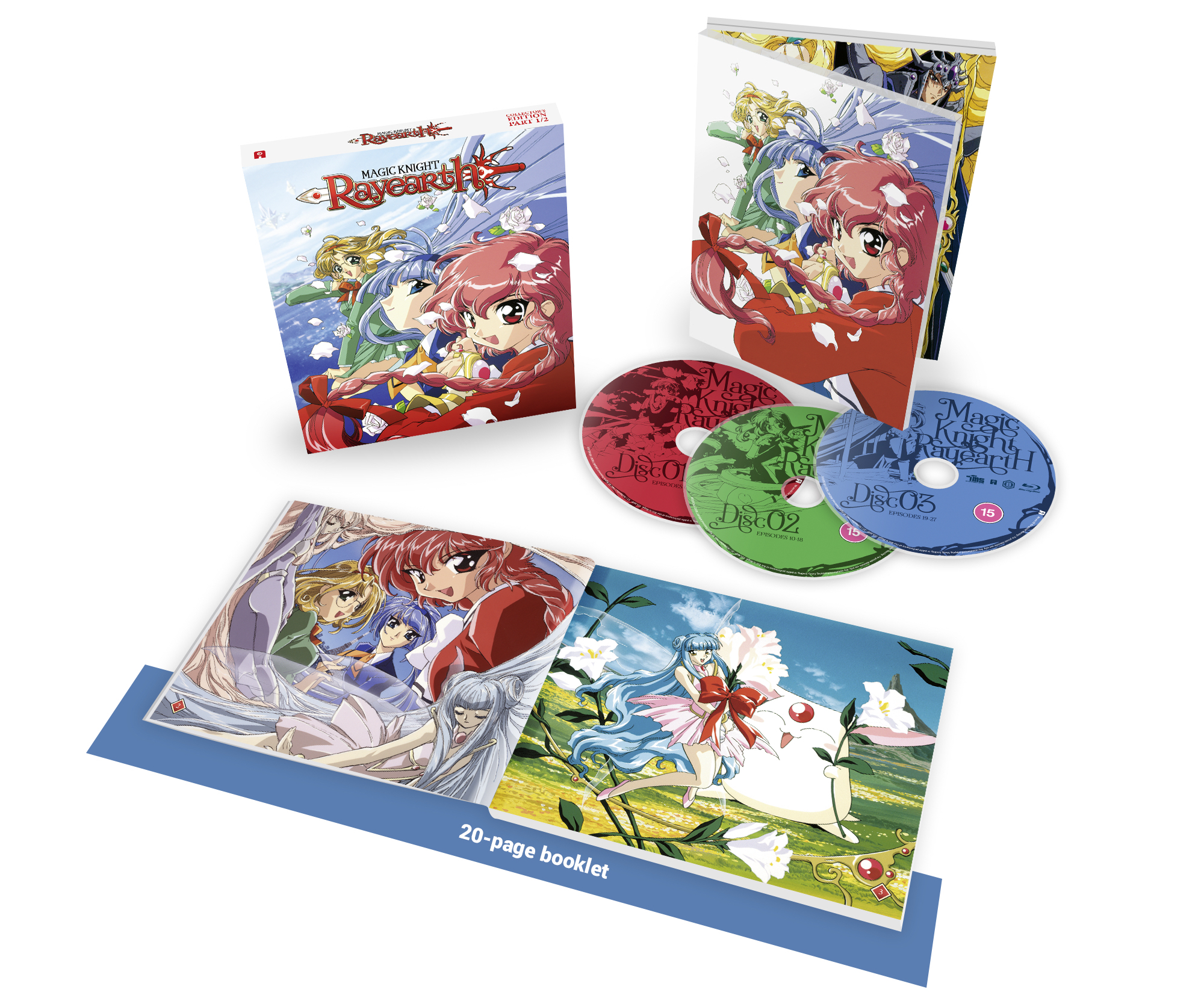

And then the latter half of the series kicks in, and the Knights ditch their human size for ginormous mechas, which they use for epic battles in outer space. From the outset, everything smacks of Sailor Moon and Magical Girl Lyrical Nanoha – you have a team of pretty girls each with their own distinct colour scheme for easy identification, a fluffy animal who accompanies them so as to give guidance and spew magical objects from its mouth whenever needed, and a quest to collect items and defeat a final boss villain. Magic Knight Rayearth is curious because it’s an amalgamation of three genres which generally don’t mix – mainly Magical Girl and Mecha, with a dash of Shounen.

And, as the story goes, the girls embark on their quest to save the strange world they have been sucked into, picking up magical artefacts and honing magical powers along the way. The three girls, Hikaru, Umi, and Fuu, have been chosen as Magic Knights, the only beings who may awaken three Rune Gods to don and defeat Zagato.

Thereupon, an elderly mage called Clef, tells them that Cephiro is crumbling into ruin because its Pillar, Princess Emeraude, has been kidnapped by her evil High Priest Zagato. Hikaru, Umi and Fuu find themselves brought together by fate on their individual school excursions to Tokyo Tower, where they are magically whisked away to an land called Cephiro, by a blinding light. In a nutshell, Magic Knight Rayearth is a 50 episode tale about a group of three high school girls on a quest to save a kidnapped princess.

So with the recent announcement of a new Tsubasa continuation gearing up for serialisation, I just had to lie down for a bit, and reminisce upon the good old days where CLAMP could still craft a nice, simple work of art… For years, now, my relationship with their work has been rolling down a merry spiral – thanks to my unhealthy attachment to unfinished series like X and Clover, and the 2012 boring historical exposition that was Gate 7. So if works like Cardcaptor Sakura and Chobits ring a bell, then yes, you’ll know that I’m talking about CLAMP. In my Code Geass review, I mentioned a manga artist group with a serious penchant for cats, helpless moes, characters with limbs of spaghetti, and unfinished or ambiguous endings.


 0 kommentar(er)
0 kommentar(er)
